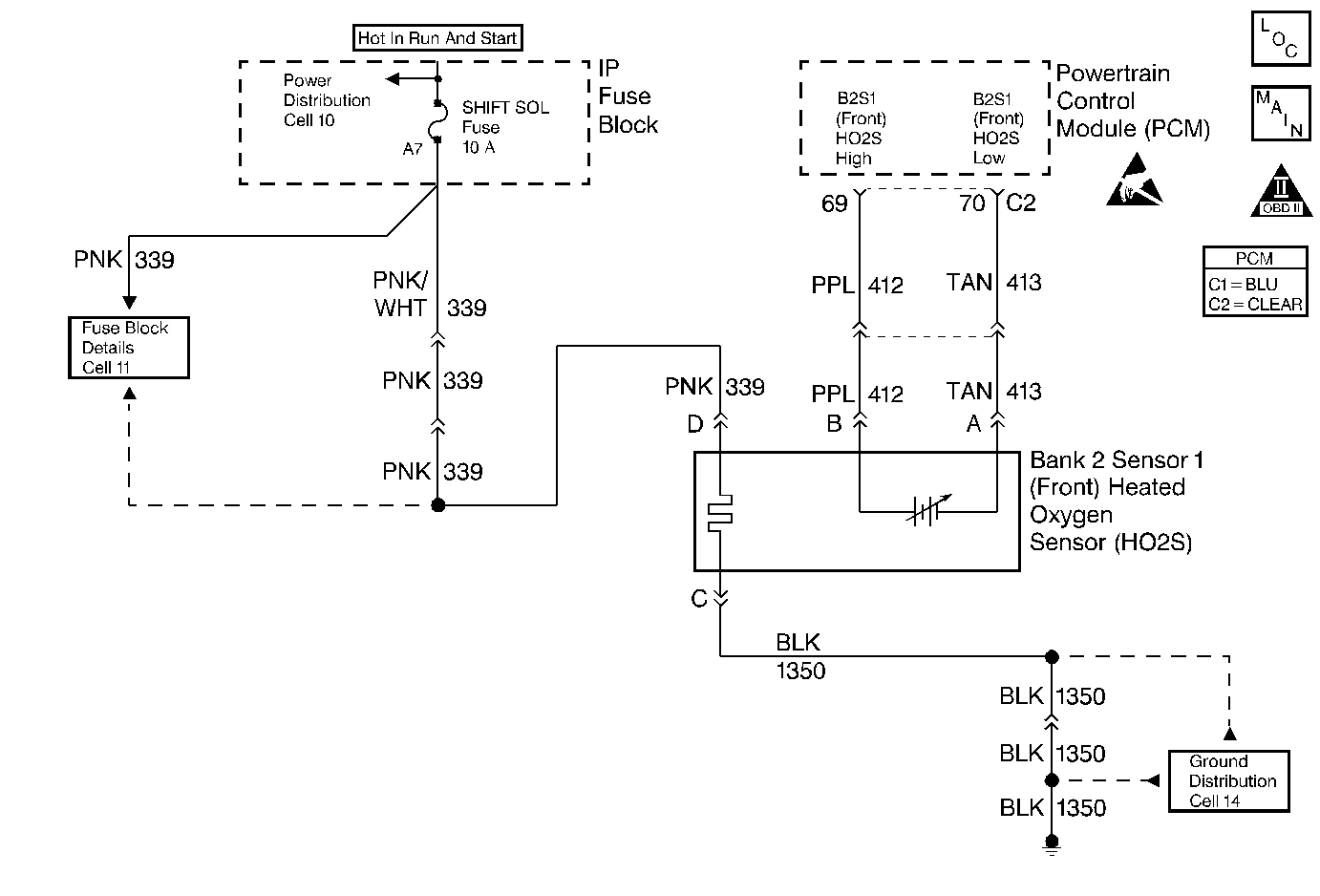
Circuit Description
This diagnostic test is used in conjunction with the front oxygen sensor slow response diagnostic test (P0153). The ratio of the response times that were calculated are compared to calibrated limits. If the number of both lean to rich transitions, switches, and rich to lean transitions were both zero, then ratios will be set to 0. Otherwise, the ratio is calculated based on which average response time was greater.
Conditions for Running the DTC
| • | DTCs P0117, P0118, P0121, P0122, P0123, P0155 and P1153 are not set. |
| • | Engine Metal Overtemperature Protection (DTC P1258) not active. |
| • | Average response time calculations completed for this ignition cycle. |
| • | This test not yet completed this ignition cycle. |
Conditions for Setting the DTC
| • | Ratio of left O2 LR/RL times greater than 64 counts. |
| • | Ratio of left O2 LR/RL times greater than 48 counts. |
Action Taken When the DTC Sets
| • | The PCM will illuminate the Malfunction Indicator Lamp (MIL) when the diagnostic runs and fails. |
| • | The PCM will record operating conditions at the time the diagnostic fails. This information will be stored in the Freeze Frame and Failure Records. |
Conditions for Clearing the MIL/DTC
| • | The PCM will turn the MIL OFF after three consecutive drive trips that the diagnostic runs and does not fail. |
| • | A Last Test Failed (current) DTC will clear when the diagnostic runs and does not fail. |
| • | A History DTC will clear after forty consecutive warm-up cycles with no failures of any emission related diagnostic test. |
| • | Use a scan tool to clear DTCs. |
| • | Interrupting PCM battery voltage may or may not clear DTCs. This practice is not recommended. Refer to Clearing Diagnostic Trouble Codes in Powertrain Control Module Description . |
Diagnostic Aids
Notice: Do not solder heated oxygen sensor wires. Soldering the wires will result in the loss of the air reference to the sensor. Refer to Engine Electrical for proper wire and connection repair techniques.
If fault is not present perform Powertrain Ground Check and also review Failure Rec. to determine conditions under which and how long ago the DTC set.
Test Description
Number(s) below refer to the step number(s) on the Diagnostic Table.
-
Checking if other possible causes of this DTC have already been diagnosed.
-
With the engine running warm, coolant at least 85°C (185°F) and at fast idle, the oxygen sensor voltage should rapidly swing above 0.60 volt and below 0.30 volt.
-
Checking if the oxygen sensor voltage is swinging between rich and lean very slowly, or not at all.
-
Checking for causes or oxygen sensor failure. If sensor is replaced without finding cause of contamination, contamination of new sensor may result.
Step | Action | Value(s) | Yes | No | ||||||
|---|---|---|---|---|---|---|---|---|---|---|
1 | Did you perform the Powertrain On-Board Diagnostic (OBD) System Check? | -- | Go to Step 2 | |||||||
Are any other DTCs set? | -- | Diagnose other DTCs first | Go to Step 3 | |||||||
After the two minutes does the front cylinder bank oxygen sensor voltage rapidly swing above and below the range specified? | 85°C (185°F) 0.30 - 0.60 volts 1200 - 2000 RPM | Go to Step 4 | Go to Step 5 | |||||||
4 | With engine running at 1200-2000 RPM, view the scan tool display Loop Status. Does the display indicate Closed? | -- | Fault not present refer to Diagnostic Aids | Go to Step 8 | ||||||
Does the front cylinder bank oxygen sensor voltage remain between the range specified longer than it swings outside this range? | 0.30 - 0.60 volts | Go to Step 8 | Go to Step 6 | |||||||
6 |
Was terminal contact repaired? | -- | Go to Powertrain Control Module Diagnosis for Verify Repair | Go to Step 7 | ||||||
7 |
Was terminal contact repaired? | -- | Go to Powertrain Control Module Diagnosis for Verify Repair | Go to Step 8 | ||||||
Were any of these possible causes found? | -- | Take necessary corrective action | Refer to Fuel System Diagnosis |
